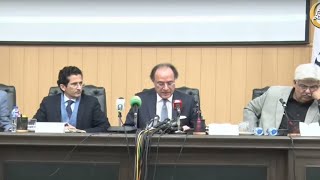Yesterday, Business Recorder published an overview of how little Pakistan and India trade with each other. The question is: will things change now that a new Pakistani government is in place?

Let’s start from the top. Imran Khan, the celebrity-turned-politician-turned-premier, has come out in support of improving bilateral trade. In his victory speech July 26, PM Khan said, “I think it will be very good for all of us if we have good relations with India. We need to have trade ties, and the more we will trade, both countries will benefit”.
That expression of interest was again reiterated a few weeks later. Just days after assuming premiership, on August 21, PM Khan tweeted: “To move forward Pakistan and India must dialogue and resolve their conflicts incl. Kashmir: The best way to alleviate poverty and uplift the people of the subcontinent is to resolve our differences through dialogue and start trading”.
The perennial qualification, of course, is the Kashmir dispute. And Khan cannot afford to ignore the issue. Past Pakistani governments have used the process of achieving trade-normalization first, as a pathway to address the core issue of Kashmir at a later stage. Will PM Khan follow the same sequence to melt the frosty relations? And will he be able to persuade the Indian leadership to stay the course despite any terrorist incidents along the way?
Getting the institutional support within would be the key to successful cross-border overtures. This turf will test whether Khan means business. It is clear that the premier has been warmly welcomed by the khakis. Also on record are the current army chief’s recent statements on the need for Indo-Pak peace. Will it be too much to suspect that the security establishment is open to a breakthrough in Indo-Pak relations?
If Khan gets the politics around India right, what about the economics? It is in Khan’s cabinet where things might get interesting, for he will hear voices both for and against opening up to India. On one hand, there is economist Ishrat Husain (Khan’s adviser on institutional reforms), who has previously advocated normalizing trade with India and the resulting consumer surplus for Pakistani citizens.
On the other hand, big business may be less sanguine about Indo-Pak trade normalization. The Pakistan Business Council (PBC) – the representative body of large industrial and consumer businesses, with which cabinet members Asad Umar (finance minister) and Abdul Razzak Dawood (advisor on Commerce, Textile, Industry, Production, and Investment) have been associated in the past – has previously urged caution on the issue of granting India the non-discriminatory market access.
For instance, a 2017 PBC report had noted: “In the presence of India’s restrictive trade regime and a number of subsidies that Indian exporters enjoy, the one-sided granting of market access to Indian companies runs the risk of domestic industry being unable to compete with cheap and subsidized imports leading to massive unemployment and social unrest in Pakistan”.
There is also a concern that Pakistan’s trade balance with India will worsen as a result of trade normalization. The same PBC report noted that Pakistani export potential in the Indian market for top-50 Pakistani export products was $1.82 billion (actual: $162 mn) in 2015, whereas India’s import potential in the Pakistani market for top-50 Pakistani import products was $7.14 billion (actual: $597 mn).
However, if non-tariff barriers are successfully negotiated on both sides and local competitiveness is maintained through targeted, pro-industrial interventions, higher trade with India wouldn’t necessarily lead to a higher current account deficit for Pakistan. After all, Pakistan will find better access to a much larger export market while it will import from India in similar quantum what it has been importing from faraway lands. Not to mention, consumers will have more choice in terms of product quality, variety and prices.
It isn’t clear how much priority this issue will get; but the PM will be best served by a robust economic debate on the matter. In the end, with institutional support, Khan will need to swiftly take steps forward and let the chips fall where they may.
But it takes two to tango. Modi sarkar is up for re-election next summer. And that means Indo-Pak relations will again be at risk of becoming campaign fodder.






















Comments
Comments are closed.